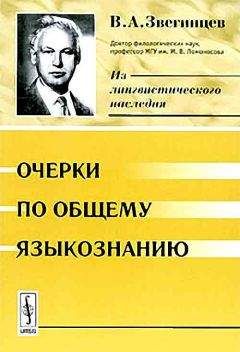Нина Пусенкова - Английский язык. Практический курс для решения бизнес-задач

Все авторские права соблюдены. Напишите нам, если Вы не согласны.
Описание книги "Английский язык. Практический курс для решения бизнес-задач"
Описание и краткое содержание "Английский язык. Практический курс для решения бизнес-задач" читать бесплатно онлайн.
Задача данного издания – познакомить учащихся с современной финансово-экономической терминологией. Первая часть книги в большей мере посвящена вопросам управления, вторая – финансовой проблематике. Темы занятий в основном соответствуют тематике курсов, которые преподаются в большинстве школ бизнеса. Уроки содержат тексты из самых разнообразных профессиональных источников и упражнения, позволяющие студентам закрепить пройденный материал. В конце учебника приводится словарь необходимой лексики примерно из 1000 слов и выражений.
Для студентов бизнес-школ, языковых, финансовых и экономических вузов, а также для всех, кто хотел бы усовершенствовать свой деловой и финансовый английский.
Использование такой системы позволяет также резко сократить расходы на аппарат управления, обнаруживать дефекты в ходе производства и устранять их сразу же на месте, обеспечить работу всех подразделений при минимальных затратах.
Конечно, внедрение такой системы требует четко отлаженного механизма и ответственности каждого работника на своем рабочем месте. Необходимо также преодолеть психологическое сопротивление менеджеров, которые не привыкли работать без страховых заделов и запасов.
Источник: выдержка из Грейсон Джексон К. младший, О’Делл Карла; «Американский менеджмент на пороге XXI века», http://ek.–lit.agava.ru
Lesson 5
Great Managers
Read and translate the text and learn terms from the Essential Vocabulary.
How Jack Welch Ran GE
If leadership is an art, then Welch has proved himself a master painter. Few have personified corporate leadership more dramatically. Fewer still have so consistently delivered on the results of that leadership. «The two greatest corporate leaders of the 20th century are Alfred Sloan of General Motors and Jack Welch of GE,» says Noel Tichy, a University of Michigan management professor. «And Welch would be the greater of the two because he set a new, contemporary paradigm for the corporation that is the model for the 21st century.»
It is a model that has delivered extraordinary growth, increasing the market value of GE from $12 billion in 1981 to about $280 billion in 2000. No one, not Microsoft’s William Gates, not Walt Disney’s Michael Eisner, not even the late Coca-Cola chieftain Roberto Goizueta, has created more shareholder value than Jack Welch.
Of course, GE’s success is hardly Welch’s alone. The company boasts what most headhunters believe to be the most talent-rich management in the world. Thus, Robert Wright has managed an astonishing turnaround at NBC, leading it to a fifth straight year of double-digit earnings gains in 1997 and a No.1 position in prime-time ratings. Nor did Welch’s magic work everywhere in GE. The huge appliance operation, for instance, saw operating earnings fall 39% in 1998, to $458 million.
Welch has transformed what was an old-line American industrial giant into a highly competitive global growth engine. Welch has reshaped the company through more than 600 acquisitions and a forceful push abroad into emerging markets. How did Welch, who sat atop a business empire with $304 billion in assets, $89.3 billion in sales, and 276,000 employees in more than 100 countries, did it?
He did it through sheer force of personality, coupled with an unbridled passion for winning the game of business and a keen attention to details many chieftains would simply overlook. He did it because he was a fierce believer in the power of his people.
Welch’s profound grasp on General Electric stemmed from knowing the company and those who work for it like no other. There were the thousands of «students» he has encountered in his classes at the Croton-on-Hudson campus. Then there was the way he spent his time: More than half was devoted to «people» issues. But most important, he has created something unique at a big company: informality.
Welch liked to call General Electric the «grocery store». «What’s important at the grocery store is just as important in engines or medical systems,» said Welch. «If the customer isn’t satisfied, if the stuff is getting stale, if the shelf isn’t right, it’s the same thing. You manage it like a small organization. You don’t get hung up on zeros.»
You don’t get hung up on formalities, either. If the hierarchy that Welch inherited, with its nine layers of management, hasn’t been completely undermined, it has been severely damaged. Everyone called him Jack. Everyone could expect to see him hurry down an aisle to pick through the merchandise on a bottom shelf or to surprise an employee with a bonus.
Making the company «informal» meant violating the chain of command, communicating across layers, paying people as if they worked not for a big company but for a demanding entrepreneur where nearly everyone knows the boss. It had as much to do with Welch’s charisma as it had to do with the less visible rhythms of the company – its meetings and review sessions – and how he used them to great advantage.
When Welch became CEO, he inherited a series of obligatory corporate events that he transformed into meaningful levers of leadership. These get-togethers allowed him to set and change the corporation’s agenda, to challenge the strategies and the people in each of GE’s dozen divisions, and to make his opinions known to all.
Welch believed that efficiencies in business were infinite because there were no bounds to human creativity. «The idea flow from the human spirit is absolutely unlimited,» Welch declared. «All you have to do is tap into that well. I don’t like to use the word efficiency. It’s creativity. It’s a belief that every person counts.»
Not surprisingly, Welch embraced the largest corporate quality initiative ever undertaken. For years, he had been skeptical of the quality programs that were the rage in the 1980s. He felt that they were too heavy on slogans and too light on results. That was before he heard Lawrence Bossidy telling about the benefits he was reaping from a quality initiative he had launched at AlliedSignal. Bossidy had borrowed the Six Sigma program from Motorola and reported that the company was lowering costs, increasing productivity, and generating more profit.
A Six Sigma quality level generates fewer than 3.4 defects per million operations in a manufacturing or service process. GE is running at a Sigma level of three to four. The gap between that and the Six Sigma level is costing the company between $8 billion and $12 billion a year in inefficiencies and lost productivity. To make the ideas take hold throughout GE required the training of so-called master black belts, black belts, and green belts. Welch launched the effort in late 1995 with 200 projects and intensive training programs, moved to 3,000 projects and more training in 1996, and implemented 6,000 projects and still more training in 1997. In 1998, Six Sigma delivered $320 million in productivity gains and profits, more than double Welch’s original goal of $150 million. «Six Sigma has spread like wildfire across the company, and it is transforming everything we do,» boasted Welch.
Show and Tell
The success of the program was evident in 1998 at Boca Raton, where Welch kicked off each year with a meeting for the top 500 executives. That year, 29 managers spoke about their Six Sigma projects describing how they used new ideas to squeeze still more profit out of the lean machine that is GE. One after another explained how quality efforts cut costs and mistakes, enhanced productivity, and eliminated the need for investment in new plant and equipment.
William Woodburn, who headed GE’s industrial diamonds business, was one of the 1998 heroes at Boca. In just 4 years, Woodburn had increased the operation’s return on investment fourfold and halved the cost structure.
Employing Six Sigma ideas, he and his team have squeezed so much efficiency out of their existing facilities that they believed they have eliminated the need for all investment in plant and equipment for a decade. Some 300 other managers from GE have visited the plant to learn directly how Woodburn has done it.
But the main event was Welch’s wrap-up comments. Even though GE had just ended a record year, with earnings up 13%, Welch wanted more. Most CEOs would give a feel-good, congratulatory chat. But Welch warned the group that it would face one of the toughest years in a decade. It’s no time to be complacent, he said, not with the Asian economic crisis, not with deflation in the air.
Then, the ideas tumbled out of him for how they can combat deflation. «Don’t add costs,» he advised. «Increase inventory turns. Use intellectual capital to replace plant and equipment investment. Raise approvals for price decisions.»
Roses and Champagne
Welch was uncommonly conscious of the signals and symbolism of leadership. His handwritten notes sent to everyone from direct reports to hourly workers possessed enormous impact, too. Moments after Welch lifted his black felt-tip pen, they were sent via fax direct to the employee. Two days later, the original arrived in the mail.
They were written to inspire and motivate as often as to stir and demand action. In 1996, for example, Woodburn turned down a promotion from Welch that would have required a transfer because he didn’t want to move his teenage daughter out of school. Welch spoke to Woodburn on the phone and within a day sent a personal note to him.
«Bill,» wrote Welch, «we like you for a lot of reasons – one of them is that you are a very special person. You proved it again this morning. Good for you and your lucky family. Make Diamonds a great business and keep your priorities straight.» To Woodburn, the note was an important gesture. «It showed me he cared about me not as a manager but as a person. It means a lot.»
Or consider how Welch became involved in the excruciating details of the tubes that go into GE’s X-ray and CAT-scan machines. In the mid-1990s, Welch, who spent 15% to 20% of his time interacting with customers, heard some complaints about the poor quality of the tubes. The product was averaging little more than 25,000 scans, less than half what competing tubes were getting.
To fix the problem, Welch reached two levels down into the organization and summoned to corporate headquarters Marc Onetto who had been general manager for service and maintenance in Europe. His orders were simple and direct: «Fix it,» Welch demanded. «I want 100,000 scans out of my tubes!»
For the next four years, Onetto faxed weekly reports direct to Welch, detailing his progress. Back would come notes from Welch every three to four weeks. Some would nearly growl for greater progress; others would flatter and cajole. The experience astonished Onetto. «I was just running a little business here, about $450 million in revenues, and I was so amazed that he could find the time to read my reports and then even send me back notes,» he said. Since then, Onetto’s team has created versions of the tubes that average between 150,000 and 200,000 scans. The improvements added about $14 million in productivity benefits to the division last year.
Not everyone saw that side of Welch. Some rank-and-file employees, for example, grumbled about the unrelenting pressure on them to perform. «No matter how many records are broken in productivity or profits, it’s always ‘What have you done for me lately?» ’ said Stephen Tormey, who negotiated the United Electrical Workers contract. «The workers are considered lemons, and they are squeezed really dry.»
Other critics have questioned whether the pressure Welch imposed led some employees to cut corners, possibly contributing to the defense-contracting scandals that have plagued GE or the humiliating Kidder, Peabody bond-trading scheme of the early 1990s that generated bogus profits.
Stick and Carrot
Few would dispute that Welch was seen as a demanding executive who aroused a mixture of awe and fear. Aware of the daunting effect he can have on people, Welch worked hard to counter that image. Not long ago, recalled human relations chief William J. Conaty, one manager who had to make a presentation before Welch was so apprehensive he was shaking. It was the first time he had met Welch, who was passing through St. Louis. «I’m so nervous,» the manager confessed to Welch. «And my wife has told me she’ll throw me out of the house if I can’t get through this presentation.»
At day’s end, when Welch was back on the corporate plane, he immediately arranged for a dozen roses and a bottle of Dom Perignon to be delivered to the man’s home. He then wrote a note to the wife: «Your husband did a fantastic job today. We’re sorry we put him and you through this for a couple of weeks.»
Welch set precise performance targets and monitored them throughout the year. And each of Welch’s direct reports received from Welch handwritten, two-page job evaluation at the end of every year. Attached to the detailed notes were his jottings from a year earlier, with new comments written in red pencil: «Nice job.» «Still needs work.»
Every bonus, and every stock-option grant to Welch’s 20 or so direct reports came with a candid talk about performance. «There are carrots and sticks here, and he is extraordinarily good at applying both,» said a senior VP. «When he hands you a bonus or a stock option, he lets you know exactly what he wants in the coming year.»
Welch skillfully used rewards to drive behavior. Welch demanded that the rewards a leader disbursed to people be highly differentiated. Although GE set an overall 4% salary increase as a target in 1998, base salaries could rise by as much as 25% in a year without a promotion. Cash bonuses could increase as much as 150% in a year. Stock options, once reserved for the most senior officers at GE, have been broadly expanded under Welch. Now, some 27,000 employees get them, nearly a third of GE’s professional employees. Unlike many companies that hand out options as automatic annual grants, Welch did not want GE’s program to be perceived as a «dental plan.» So everyone who received options didn’t get them every year.
Welch has been a major beneficiary of stock options. Yet few things energized Welch as much as reviewing a list of GE employees who cash in their rewards. Combing through the names, Welch could hardly contain his enthusiasm – for the wealth he has put into the hands of people whose names were unfamiliar to him. In the first quarter of 1998 alone, some 3,900 employees exercised 8.7 million options with a net value of $520 million. «It means that everyone is getting the rewards, not just a few of us,» he said. «That’s a big deal. We’re changing their game and their lives».
While analysts on Wall Street or GE’s own investors viewed Welch’s likely legacy as creating the world’s most valuable company in stock market terms, Welch himself saw things quite differently. The man who spent more than 50% of his time on people issues considered his greatest achievement the care and feeding of talent. «This place runs by its great people,» said Welch. «The biggest accomplishment I’ve had is to find great people. An army of them. They are all better than most CEOs.»
While many companies profess to run as meritocracies, in reality, they are often conscious of class. At GE many of the company’s most successful executives were, like Welch, the first in their families to earn college degrees. When it came time to pick a new CFO, for instance, Welch passed over several candidates in line for the job in favor of then 38-year-old Dennis Dammerman two layers down in the ranks because he was impressed with how he had handled other tough assignments.
Подписывайтесь на наши страницы в социальных сетях.
Будьте в курсе последних книжных новинок, комментируйте, обсуждайте. Мы ждём Вас!
Похожие книги на "Английский язык. Практический курс для решения бизнес-задач"
Книги похожие на "Английский язык. Практический курс для решения бизнес-задач" читать онлайн или скачать бесплатно полные версии.
Мы рекомендуем Вам зарегистрироваться либо войти на сайт под своим именем.
Отзывы о "Нина Пусенкова - Английский язык. Практический курс для решения бизнес-задач"
Отзывы читателей о книге "Английский язык. Практический курс для решения бизнес-задач", комментарии и мнения людей о произведении.






















